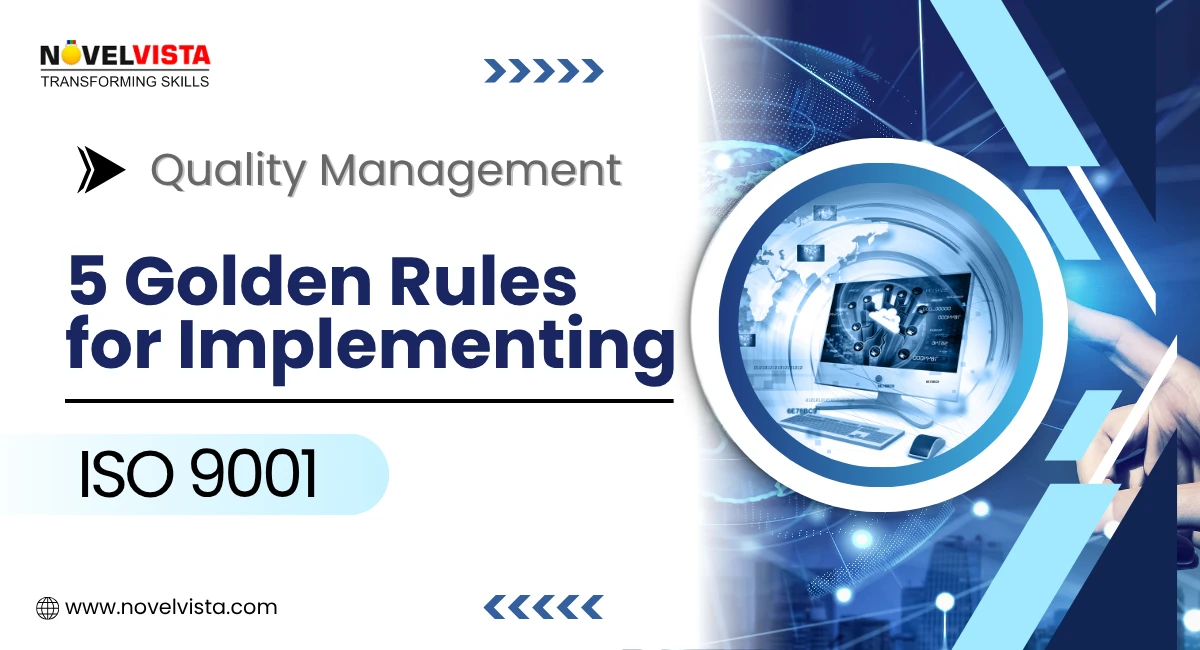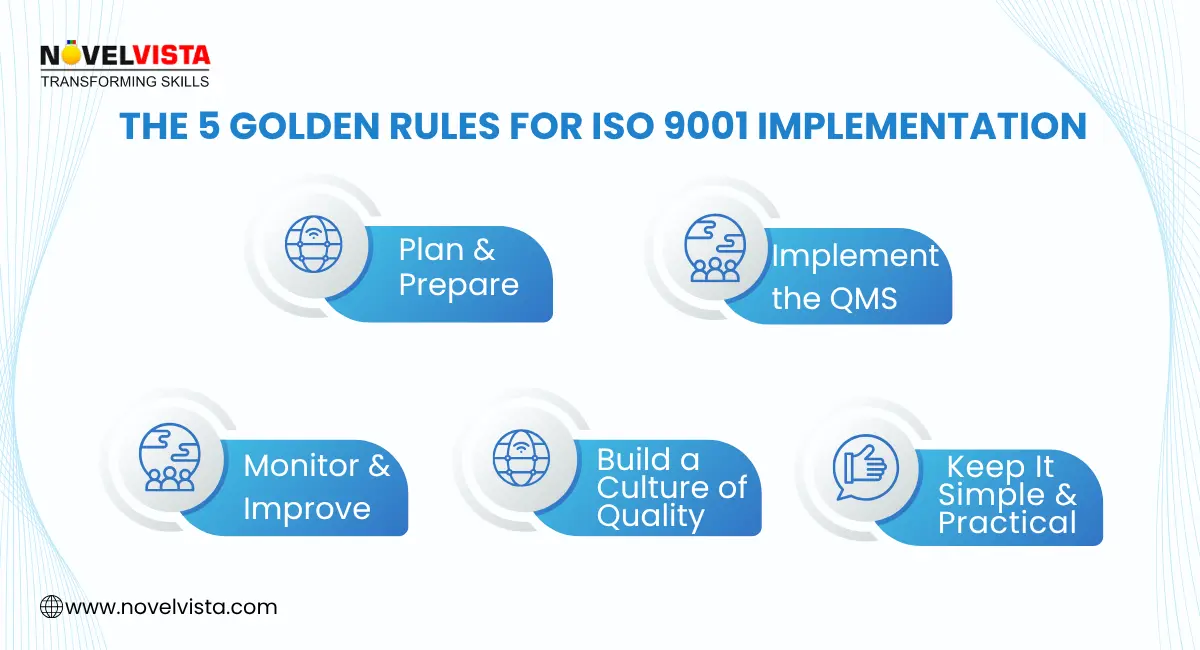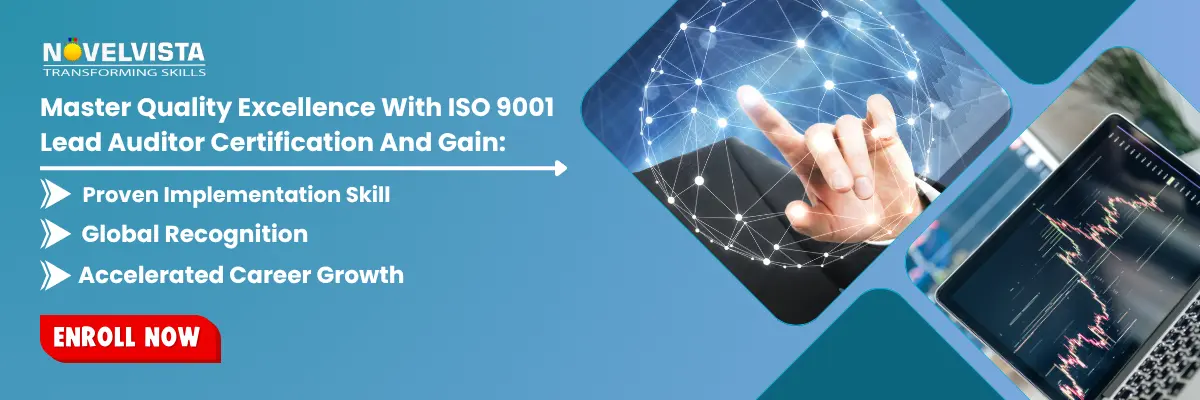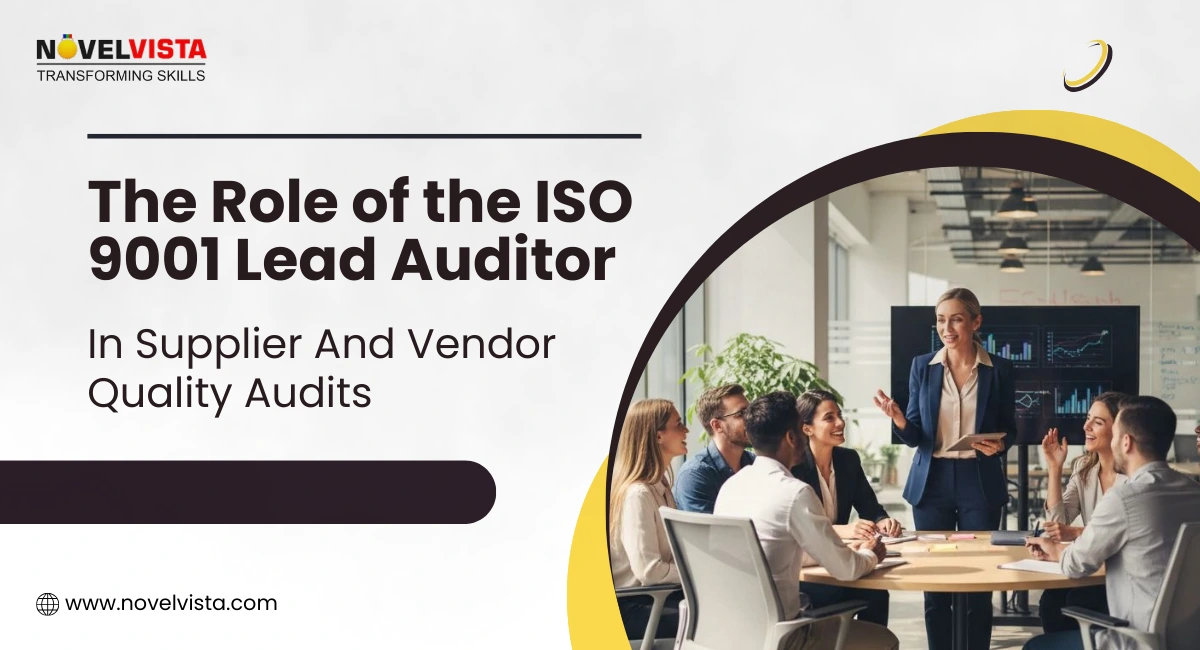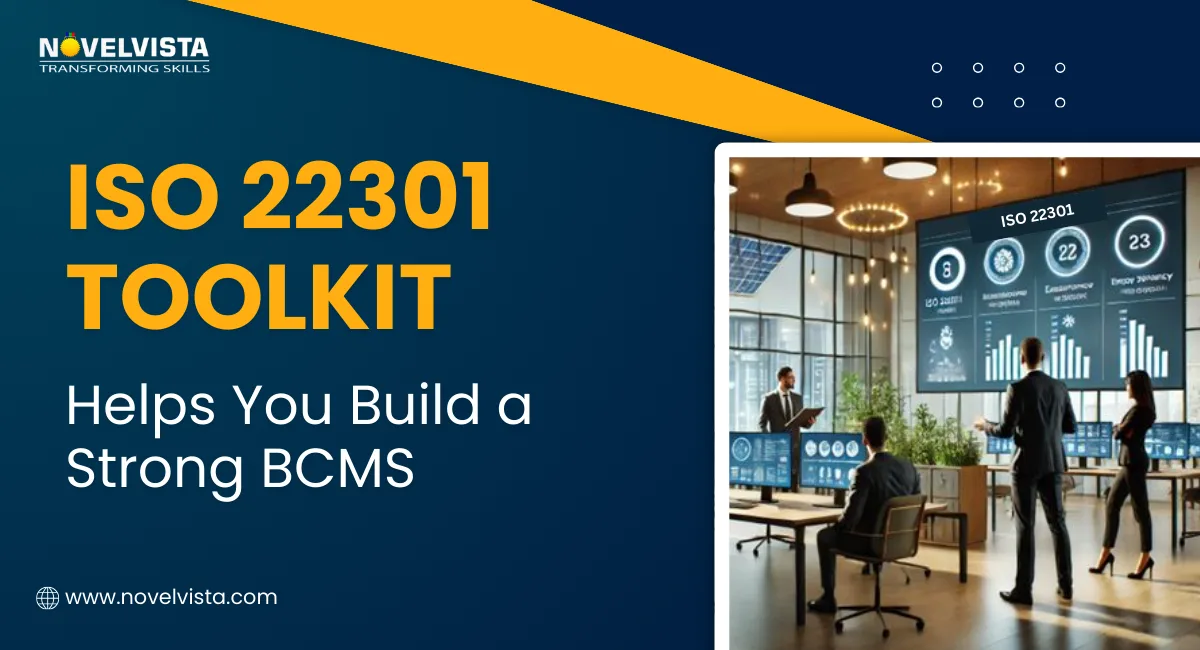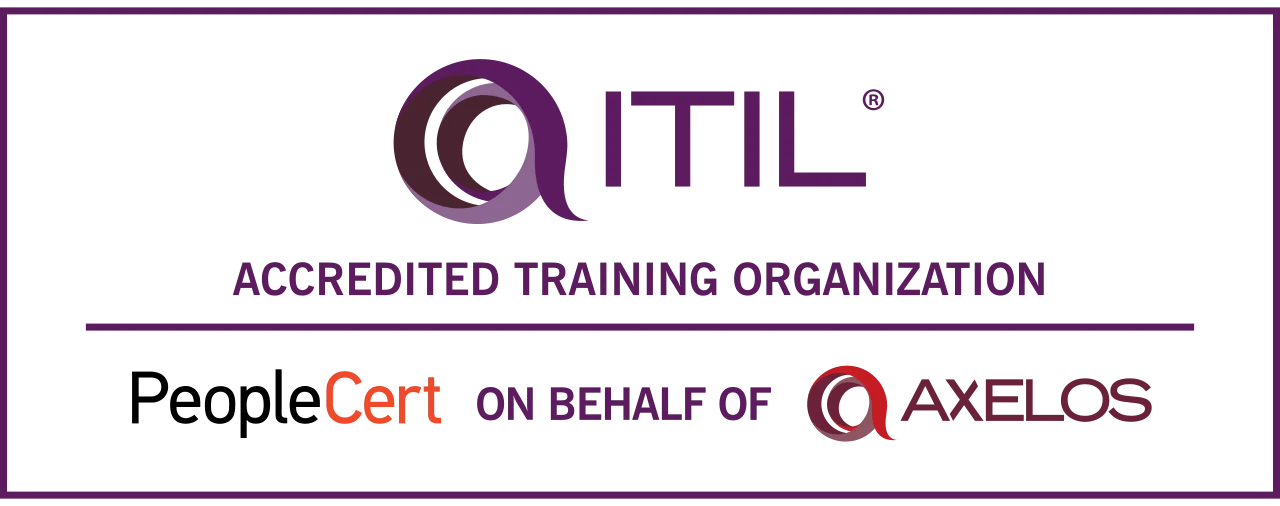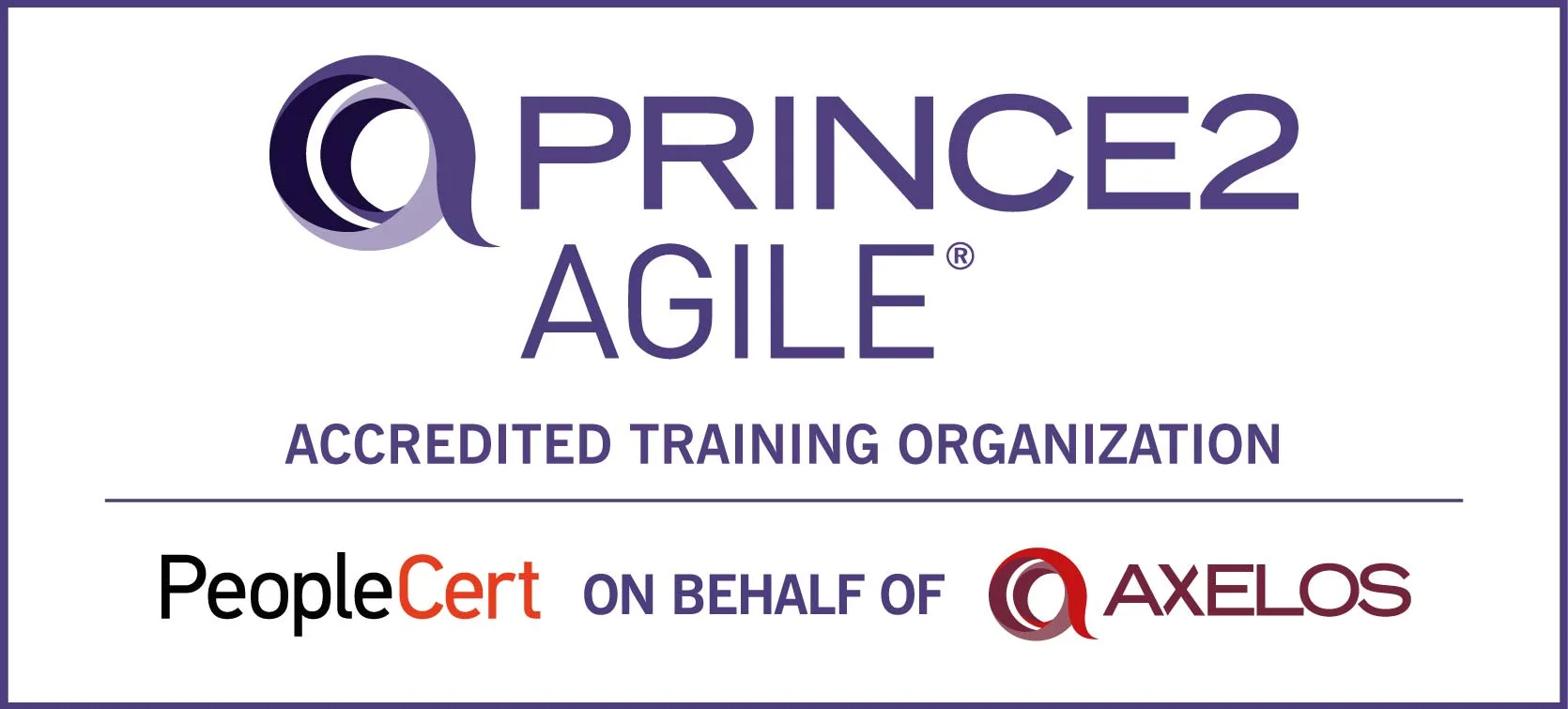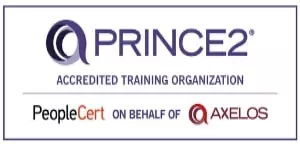Most organizations know that ISO 9001 boosts quality and credibility. But when it’s time to actually implement it, confusion takes over: how to implement ISO 9001, what to document, and who does what?
Here’s the simple answer: to implement ISO 9001, you start by understanding the standard, assessing your current processes, creating a quality management system (QMS), documenting what matters, training your people, and continually improving. Sounds easy? In theory, yes, but in practice, it can feel like juggling paperwork, procedures, and people all at once.
That’s exactly why this guide breaks it down into five golden rules that make ISO 9001 implementation practical and stress-free. Whether you’re a beginner or leading the project, you’ll learn how to plan, implement, monitor, and build a strong quality culture that actually works, not just looks good on paper, along with the benefits of implementing ISO 9001.
Understanding ISO 9001 and the Challenges of Implementation
Before diving into the rules, let’s quickly revisit what ISO 9001 is all about. It’s a globally recognized standard for creating a Quality Management System (QMS), a framework that helps organizations deliver consistent quality, meet customer expectations, and continuously improve their operations.
But let’s be honest, ISO 9001 implementation often feels tougher than it looks on paper. Why? Because organizations commonly face these challenges:
- Lack of leadership commitment: Without top management support, ISO becomes “just another project.”
- Over-documentation: Many teams drown in paperwork instead of focusing on practical improvements.
- Low employee engagement: Staff see ISO 9001 as a compliance burden, not a quality tool.
- Unclear process ownership: Nobody knows who’s responsible for what, leading to confusion and missed steps.
- Skipping regular audits and reviews: Without monitoring, the system loses relevance over time.
The good news? These aren’t dealbreakers. With a structured approach and the right mindset, you can turn these challenges into learning opportunities. Let’s go through the five golden rules that make it happen.
ISO 9001 Quick Reference Checklist
Avoid the mistakes 90% of auditors make!
Master all ISO 9001 clauses and documentation
steps in one cheat sheet.
The 5 Golden Rules for Successful ISO 9001 Implementation
Rule 1: Plan and Prepare
(Lays the foundation for success)
Before you even think about certification, focus on planning. This is where most teams either build momentum or lose it.
- Gain Management Commitment: ISO 9001 needs leadership backing. Get top management to actively support the process with time, budget, and communication.
- Understand the Standard: Make sure your team knows what ISO 9001 requires. Purchase the official standard or take a short awareness course to build clarity.
- Conduct a Gap Analysis: Compare your current processes with ISO 9001 requirements. Identify missing policies, undefined processes, or unclear responsibilities.
- Define Scope and Context: Decide which areas of your organization your QMS will cover. Include all key stakeholders early on.
- Develop Action Plans: Set clear timelines and assign ownership for each improvement task.
Rule 2: Implement the Quality Management System (QMS)
(Turn the plan into action)
Once your plan is ready, it’s time to put things into motion. ISO 9001 implementation isn’t about creating piles of documents; it’s about setting up a working system that improves consistency and quality.
- Document the QMS: Create essential documents, like your Quality Policy, Quality Objectives, and process procedures.
- Define Key Processes: Map how your departments interact and contribute to delivering products or services.
- Establish Controls: Set up checks and balances to reduce errors, manage risks, and maintain standards.
- Engage Employees: Train your people so they understand the “why” behind ISO 9001, not just the “what.”
- Assign Responsibilities: Make every process owner accountable for performance and improvement.
-
Pro Tip: Keep things simple. Document only what’s necessary for your organization’s day-to-day operations.
Rule 3: Monitor and Improve Continuously
(Keep your QMS alive and relevant)
The beauty of ISO 9001 lies in its ongoing cycle of improvement. Once your system is live, monitoring becomes your best friend.
- Monitor Performance: Track metrics like efficiency, customer satisfaction, and nonconformities.
- Conduct Internal Audits: Schedule audits to check whether your processes meet both ISO and your internal requirements.
- Review and Improve: Use management review meetings to evaluate what’s working and what needs a tweak.
- Prepare for Certification: When your QMS feels consistent and mature, go for third-party certification.
- Maintain Momentum: Remember, certification isn’t the end, it’s the beginning of continual improvement.
Rule 4: Keep It Simple and Practical
(Because overcomplicating kills progress)
Here’s where most teams stumble, they make ISO 9001 harder than it needs to be.
You don’t need hundreds of pages of documentation or overly complex procedures. The real strength of ISO lies in clarity and consistency, not complexity.
- Focus on what matters: Keep every process clear, logical, and easy for your team to follow.
- Trim unnecessary documentation: Only maintain documents that genuinely help your operations.
- Avoid “for the audit” activities: ISO 9001 shouldn’t feel like paperwork just to please auditors.
- Make improvement cycles short and focused: Review, adjust, and move forward, no endless loops of meetings.
When your system is simple and your people understand it, ISO 9001 implementation becomes effortless, efficient, and sustainable.
Rule 5: Build a Culture of Quality
(Because systems fail if people don’t believe in them)
You can have a perfectly written QMS, but if your people don’t care about quality, it won’t last. ISO 9001 only works when it becomes part of your organizational DNA.
- Encourage feedback: Let employees suggest process improvements; they often know the real issues best.
- Celebrate improvements: Recognize and reward small wins to keep motivation high.
- Make quality everyone’s job: From top management to frontline staff, involve everyone in quality ownership.
- Promote open communication: When people understand why something matters, they naturally take ownership.
Over time, this kind of engagement builds trust, accountability, and a strong reputation for quality. That’s one of the biggest benefits of implementing ISO 9001: it transforms your business mindset from compliance to excellence.
Tools and Resources for ISO 9001 Implementation
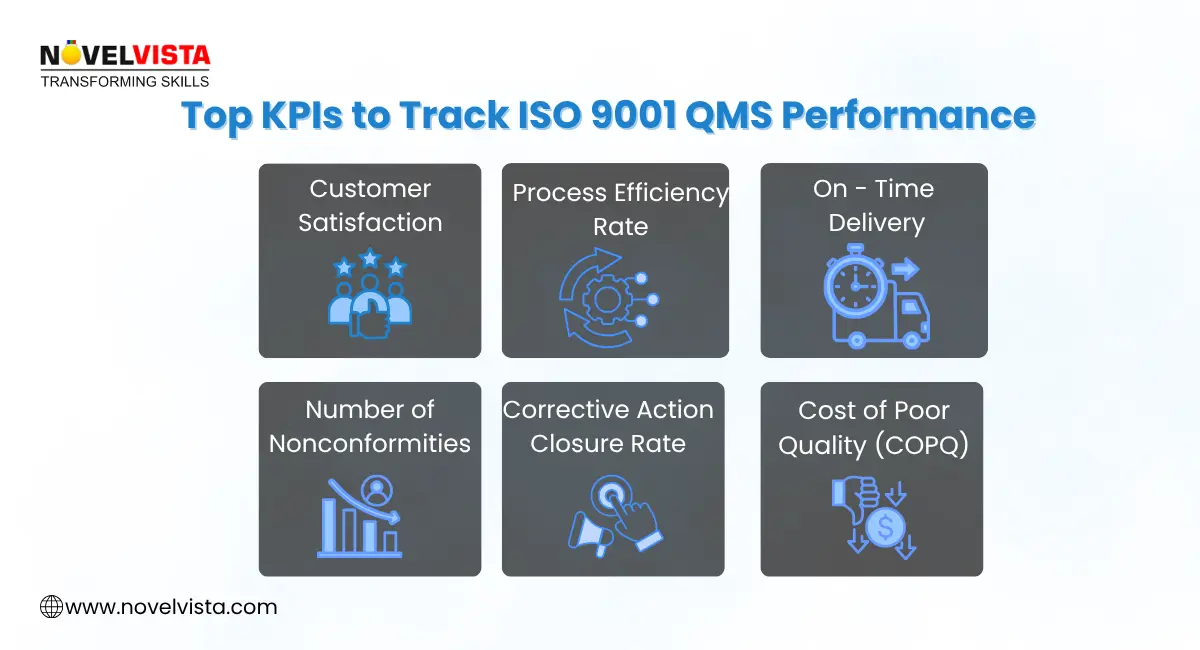
Getting ISO 9001 right doesn’t mean starting from scratch. The right tools can make the journey faster and easier, and also maximize the benefits of implementing ISO 9001:
- Process Mapping Software (e.g., Lucidchart, Miro) – visualize how your processes connect.
- Document Control Systems (e.g., SharePoint, Confluence) – manage version control and accessibility.
- Audit Management Tools (e.g., SoftExpert, Intelex) – plan, conduct, and track audits smoothly.
The downloadable ISO 9001 Implementation Roadmap PDF also includes editable templates and checklists for these tools, so you can structure everything step-by-step.
Related: Benefits of Implementing ISO 9001Common Mistakes to Avoid
Even with the best intentions, organizations often fall into these traps during ISO 9001 implementation:
-
Doing it just for certification: The goal is real improvement, not just a certificate.
-
Copying templates: Tailor your QMS to fit your organization’s processes and culture.
-
Neglecting maintenance: Skipping internal audits or reviews weakens your system.
-
Ignoring KPIs: If you’re not measuring results, you can’t prove improvements.
-
Quick fixes: Schedule leadership reviews, hold short awareness sessions, and run internal checks to keep your QMS aligned and effective.
Conclusion: How to implement ISO 9001
At its core, ISO 9001 isn’t about ticking boxes; it’s about building a system that helps you deliver consistent quality, earn customer trust, and grow smarter every year.
By following these five golden rules, Plan, Implement, Monitor, Simplify, and Build Culture, you can make ISO 9001 a powerful tool for growth instead of a compliance headache.
Start small, stay consistent, and let your QMS evolve naturally. Remember, every improvement counts.
Next Step: Strengthen Your ISO Skills
If you’re serious about mastering quality management, take the next leap with NovelVista’s ISO 9001 Lead Auditor Certification Training.
This course helps you gain the skills to plan, conduct, and manage ISO 9001 audits with confidence, while strengthening your understanding of risk-based thinking and continual improvement.
You’ll learn how to evaluate real-world QMS performance, lead successful audits, and guide organizations toward long-term quality excellence. Start your journey today and become a trusted ISO 9001 Lead Auditor recognized across industries.
Frequently Asked Questions
Author Details

Mr.Vikas Sharma
Principal Consultant
I am an Accredited ITIL, ITIL 4, ITIL 4 DITS, ITIL® 4 Strategic Leader, Certified SAFe Practice Consultant , SIAM Professional, PRINCE2 AGILE, Six Sigma Black Belt Trainer with more than 20 years of Industry experience. Working as SIAM consultant managing end-to-end accountability for the performance and delivery of IT services to the users and coordinating delivery, integration, and interoperability across multiple services and suppliers. Trained more than 10000+ participants under various ITSM, Agile & Project Management frameworks like ITIL, SAFe, SIAM, VeriSM, and PRINCE2, Scrum, DevOps, Cloud, etc.
Course Related To This blog
ISO 9001:2015 Lead Auditor Training and Certification
Confused About Certification?
Get Free Consultation Call

